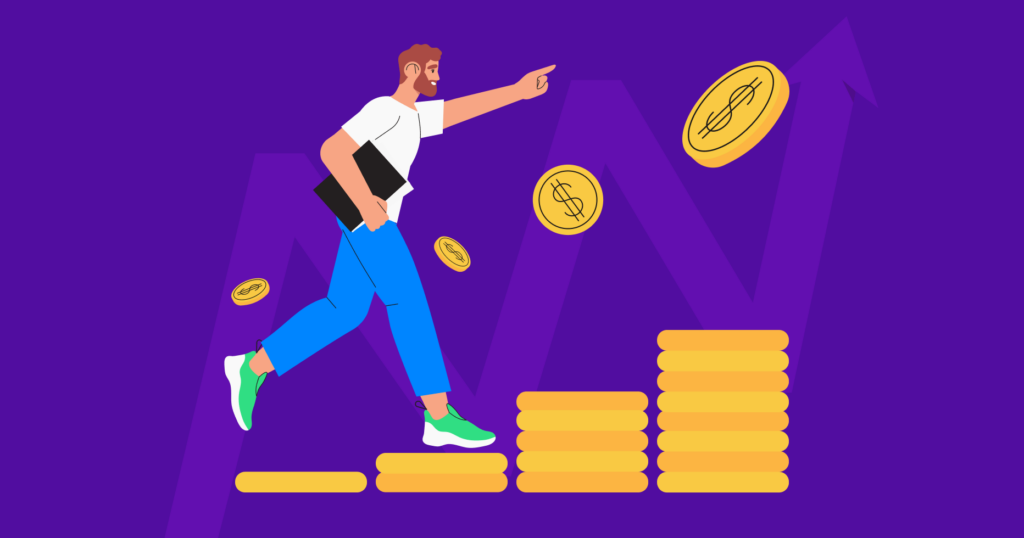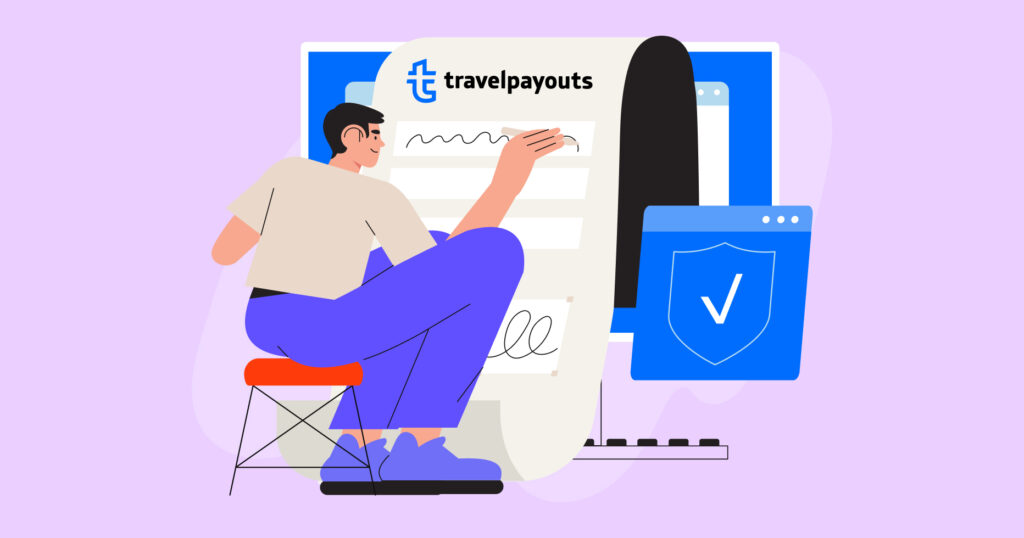How affiliate marketing works
Before we get into the tips, let’s take a look at how affiliate marketing works from the business side. Let’s approach this from the perspective of a business selling travel insurance online. You may have a different product or service, but the basic principle is the same:
- You have a product and your partners have potential customers for you. For example, your partners are blog owners who write about their personal experiences traveling the world and this audience is interested in travel insurance.
- You offer your partners a reward for each insurance policy sold (for example, 10% of the policy’s value).
- Partners are interested in attracting high-quality traffic to your site, since they will only receive income if the insurance is sold.
- All traffic from partners is marked in the database (for example, with a unique ID). You highlight these sales and pay for all of the sales attracted by your partners.
- As a result, you pay neither for clicks nor for impressions. You are paying exclusively for real sales.
In affiliate marketing, you do not spend your budget on advertising that does not generate sales or other desirable results. You pay only to achieve the desired action. In addition to actual sales, you can also choose to pay for other actions, such as:
- Filling out an application;
- Subscribing to newsletter;
- Installing a mobile application;
- And other actions.
Thanks to the affiliate program, you will be able to effectively distribute your advertising budget and gain access to a new audience. For example, you can generate traffic from YouTube channels or websites where contextual advertising is not installed.
To get the most out of affiliate marketing, follow the below tips.
1. Make the terms of the affiliate program complete and understandable
The conditions under which your affiliate program operates are the rules that your affiliates adhere to. They are also guided by these rules when choosing a program.
It is necessary, from the very beginning of the existence of the program, to convey the conditions in a transparent and understandable manner. To achieve this, write down:
- Remunerations
- How commissions are calculated
- How customers are counted (for example, according to the last cookies win model or another method)
- Cookie lifetime
- Payouts
- Confirmation of orders
- Cancellation and fee charge policy
- Traffic requirements
- If there is preliminary moderation and the conditions of this moderation
If your program has different rates (for example, for orders of new and current customers), it is necessary not only to inform your partners about this, but also to explain how exactly you group your customers. Your task is to convey all the important terms and conditions of the affiliate program to your partners.
Clear conditions are one of the fundamental factors influencing the successful development of an affiliate program. This way, you will gather partners who are ready to work on your terms and reduce the number of problematic cases. Understandable conditions are better for partners as well. Establishing well-known rules of the game from the very beginning make it possible to work more efficiently.
2. Offer a wide set of affiliate tools
Make sure you offer as many different affiliate tools as possible, including:
- Links;
- Search forms;
- Various interactive widgets;
- Ready-made landing pages;
- And others.
Prepare links and a link generator that allows partners to create an affiliate link to any page on your site. These are must-have tools. It’s not enough to offer only ready-made links to the homepage or other landing pages. It is important to give your partners the opportunity to create deep links on their own, since in this case, as a rule, partners manage to achieve better conversions into sales.
Links are suitable for partners with different types of traffic, such as webmasters, travel bloggers, YouTube vloggers, media buyers, and others. Without a link generator tool, it is impossible to imagine a successful affiliate program, but you shouldn’t stop there.
You can create much more advanced tools, such as a product showcase, a search form, or a contextual widget offering a service or product based on information from a partner’s page.
A large set of tools provides affiliates with more options for driving traffic, and in the right hands, these tools can increase conversion, which ultimately attracts more customers.
It is important to offer not only a large set of tools, but also convenient opportunities to work with them. You will be able to attract more partners and traffic if you offer webmasters convenient ways to add your affiliate tools, such as an automatic script for sharing affiliate links on the site.
3. Help partners develop their own brand
Some partners note the following disadvantage of affiliate marketing: traffic goes to the advertiser’s website and then the client makes a second purchase while bypassing the affiliate channel.
On the one hand, this is good for your business, as you no longer pay for a repeat customer who makes a purchase after the partner’s cookie expires. But, for partners, this drawback is not profitable. As a result, website owners with large audiences sometimes prefer to develop their own brand and keep traffic on their own website.
For such partners, it is necessary to offer special tools that allow you to leave traffic on the partner’s website, such as:
- White Label
- API
- Data Feed
In this case, the partner uses your technology, but offers it under their own brand. For you, this tool is a source of sales. For your partner, it is a tool for building their own business.
An example of White Label is a tool from Aviasales (ex. Jetradar) that allows each partner to create a flight ticket metasearch service with their own brand.
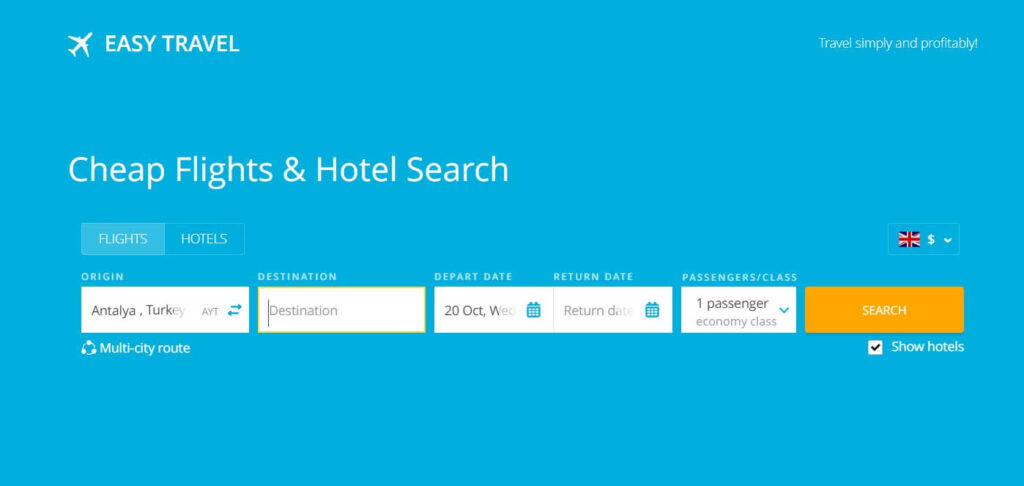
Aviasales also offers API data on flight tickets and prices, which allows partners to display flights completely in their own interface.
4. Increase the CTR of your tools
Don’t stop at creating a set of affiliate tools. Your next task is to increase the CTR of those tools.
Partners can create some creatives themselves, such as links or banners, but with your affiliate tools, your task is to improve their work. In other words, the clickability of links is the responsibility of the partner. While in the case of ready-made banners, White Label solutions, and various widgets, the responsibility is yours.
You have even more room for improving tools than your partners. Each partner sees only their own data, which may not be enough to make the right improvements, but you have access to all the data.
You can analyze general statistics, do experiments and make improvements. For example, you can experiment with changing the CTA on buttons in a search form and measure how this affects the overall CTR.
Increasing the CTR of affiliate tools is a win-win for all parties. Both you and your partners can generate more income by making this improvement.
5. Increase landing page conversion rates
Increasing the CTR of tools is only part of the job. You should also work on the conversion rates of the pages where the affiliate traffic comes. Your basic goal is to get as many sales as possible from the available traffic volume.
To do this, study the most popular landing pages and do experiments to find the options that convert the most.
Often, landing pages from partners are the same as popular landing pages for other types of traffic, such as contextual advertising. Therefore, the increase in the conversion of landing pages for partners may fully or partially coincide in the work on other sources. However, traffic from affiliates may differ in behavior from other sources (such as contextual advertising). Thus, it is not superfluous to conduct experiments that take into account the peculiarities of affiliate traffic.
For example, as a result of an experiment, you can reveal that most of the traffic from your key partners is well aware of your brand (as partners tell potential visitors a lot about your brand in advance) and is ready to buy immediately, thus bypassing two of the three stages of the purchasing process. In this case, you may prepare a new landing page or offer partners the opportunity to replace the page, which may lead to an increase in conversions.
6. Refer the right affiliates
The results of your affiliate program directly depend on the partners who have connected to it. It is not so much the quantity of partners that affects your results, but the quality and volume of suitable traffic that your partners can provide.
You can influence the partners that join your affiliate program. To do this, you can moderate applications and select partners manually or automatically.
Moderation is not a universal method of increasing affiliate revenues, but if your product is tied to certain traffic sources or breaking the rules directly harms your marketing strategy, the moderation process is one of the solutions to attract the right partners to your program.
For example, you can initially prevent affiliates from connecting to your program with traffic from contextual networks if you have your own team to buy said traffic.
In addition to moderation, transparent working conditions, which we talked about above, also contribute to attracting suitable partners. This will help you cut off partners who do not have the right traffic sources or do not meet your requirements, and leave only the right candidates.
Important: In the pursuit of finding only “ideal” partners, you should not go to the other extreme of introducing very strict requirements and declining most applicants. Partners with small blogs or traffic from rare sources can bring just as beneficial results as partners with large platforms or the type of traffic you want.
7. Work with different types of traffic
Traffic restrictions are standard practice in most affiliate programs. Some affiliate programs have super strict rules, such as the Booking.com affiliate program:
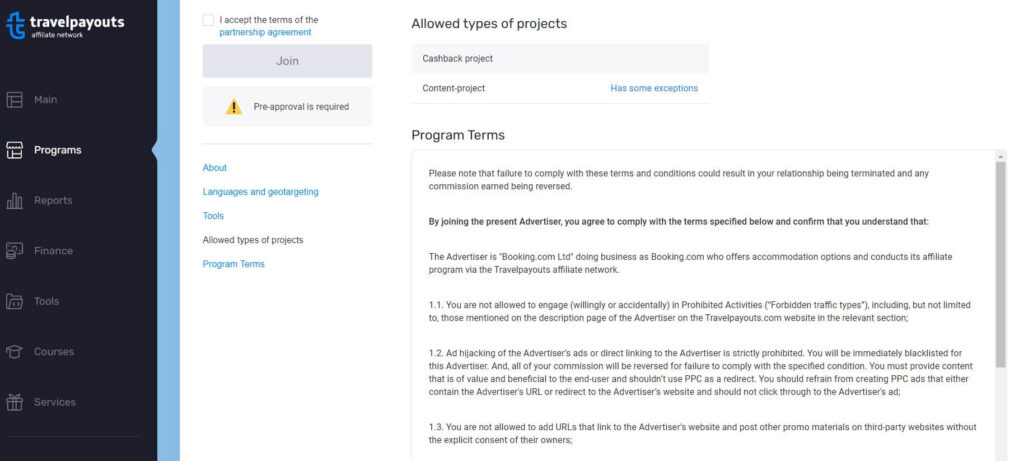
Some affiliate programs offer a loyal traffic policy and accept the most popular traffic sources, such as the Aviasales affiliate program:
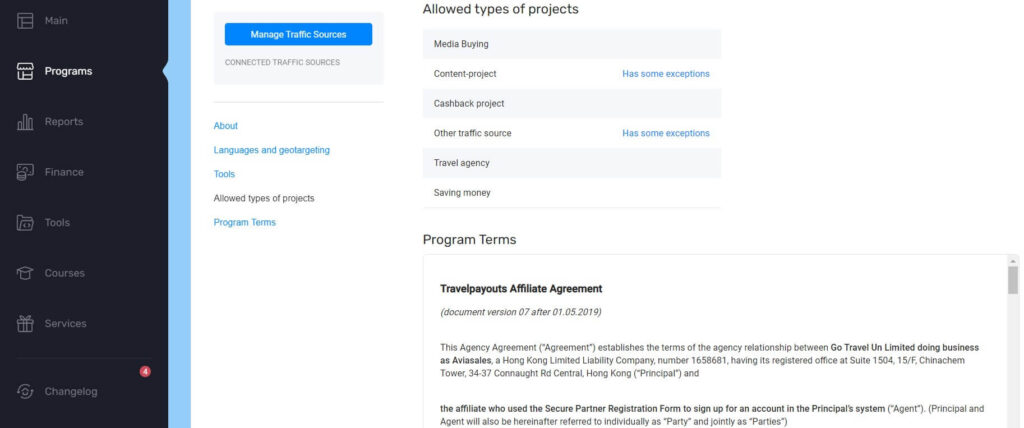
You should not severely limit the traffic options that are allowed. For example, by leaving only traffic from social networks, you significantly limit the volume of traffic available to your brand.
It is worth relaxing the traffic requirements as much as possible and allowing your list of sources to be as large as possible for your business. To assess potential traffic sources, consider the following:
- What type of traffic you have not covered through other channels
- What type of traffic does not harm your actual promotion strategy
- What type of traffic can you control the quality of
- What type of traffic can create unnecessary competition for you and increase costs for other channels
For example, if you buy contextual advertising and bid on your own branded queries (with the mention of your brand), partners in this channel will increase the average cost per click for you, which will increase your costs for contextual advertising. In this case, it is reasonable to prohibit partners from bidding on your brand in contextual networks.
The traffic policy of your affiliate program should not only be clearly marked, but also clearly delivered to your partners. It is important that your affiliates understand what is allowed and what is not. You can endlessly punish partners for violations, but it is much better to oblige partners to study the requirements and, if possible, make sure they understand the rules when they initially join the program.
8. Approach partners personally
Your partners are all different and, in the process of developing an affiliate program, situations may arise that were not described in the original rules. A personal approach to partners is the key to the successful development of your program.
Partners have offers and non-standard requests. Furthermore, some brands are creating unique tools for partners or introducing exceptions to their traffic policy. If this meets the goals and objectives of your business, then this is the right step.
This is true for programs of any size.
9. Study your competition
There are few fully unique affiliate programs and your program likely has competitors as well. Even if you know for sure that your product or service is comparable or even better for customers than those of your competitors, your positions may be different in the affiliate world.
You need to evaluate your competitors’ affiliate programs by at least exploring the following parameters:
- Rates
- Cookie lifetime
- Traffic accounting model
- Allowed traffic types
- Hold time
- Payout policy
Your program does not exist in a vacuum and you must attract partners with comparable or better conditions. However, keep in mind that the higher the rate, the more partners will not work with you.
Affiliates end up choosing programs not based on where the rate is higher, but where the income is higher. Your offer may be competitive, even if your reward per sale is lower, as long as your partner manages to attract more sales with your service.
This can be compared in terms of eCPC (Effective Cost Per Click). This indicator reflects the effective cost per click in affiliate programs. The performance of individual partners can vary greatly from the average; however, by comparing the eCPC of several programs, it is possible to identify the most advantageous offer for your partner.
Your conditions should not only match your strategy, but should also be adequate to the market. If it’s common to offer a longer cookie lifetime, try to offer a similar or more alluring condition. Of course, you can even do the opposite and offer your own rules. For example, in the Booking.com affiliate program, the cookie lifetime is limited to one session, while most competitors limit this lifetime to at least one day and often more (such as the Agoda and Hotels.com affiliate programs). If your offer varies greatly from common conditions, it should be comprehensively interesting for your partner, as in the example with Booking.com, and have a high conversion from clicks to sales.
10. Put the wind in your affiliate program
To get started, launch the program, think over the traffic policy in detail, and offer partners a sufficient number of tools, but you need to go further and increase interest in your program as well.
Some partners have been working with brands for years and do not even try new programs, because they do not know about them or do not see the value in them.
Organic growth among the total number of partners can be boosted by:
- Paid advertising
- Participation in webinars and other events
- Contests
Ideally, if an affiliate program promotion is not a one-time event, even a small promotion is better than simply launching the program and leaving it to grow on its own.
11. Help your partners
The work of your partners brings success for you. Therefore, you should, if possible, help your partners to grow by:
- Organizing a proactive support team
- Producing educational materials
- Sharing how-to’s
- Hosting webinars and other training events
You know your own product better than anyone else. Help your partners understand the value of your product and the specifics of the market, while sharing your best practices for working with your audience.
Do not limit yourself to your own expertise. Your program brings together various partners and you can use their knowledge to train other partners.
Some brands help not only by offering advice, but through their deeds. For example, they help to set up the correct placement of affiliate tools on their partners’ websites or analyze questions from a specific affiliate using examples from his/her own website.
12. Offer promo codes
If your website supports promotional codes, you can use them for affiliate marketing as well.
To increase sales, you can offer all your partners general promotional codes or choose key partners and make unique codes for them. This is a classic marketing tool that also works in affiliate marketing.
If you have regular promotional codes (for example, for seasonal sales), try to promptly inform your partners about their existence.
Note: Promotional codes may have the opposite effect and may even reduce your final profits. An additional promotional code for partners does not always affect the number of sales, especially if the client was ready to make a purchase without a promo code. When working with promotional codes in marketing in general and affiliate marketing in particular, you should carefully calculate the economy and measure the impact. Perhaps this model may not be suitable for your service or product.
13. Help partners migrate from other programs
Affiliate marketing is not a new term in the world of making money online. In fact, it is likely that your potential partners are already working with other programs right now, which they connected with before your program. Migration from one program to another is a huge step that is sometimes such a difficult task for some partners, that they do not change programs at all. You can help partners migrate from other affiliate programs to make the transition easier for them.
Having a tool to help partners migrate to your program, such as a link replacement script, is an excellent way to grow your partner base, and as a result, your income.
You need to care about migration, regardless of whether you have a well-established or brand new affiliate program. People who have previously worked with others can migrate to old long-standing programs. For example, in other programs, conditions may have changed for the worse or a potential partner may have realized the value of your offer.
14. Fight fraud
Despite the fact that you only pay for the result in affiliate marketing, there can be violations on the part of affiliates, which may cause you to lose money. To prevent this from happening, fraud must be fought on all fronts:
- Create rules to minimize the chances of fraud (for example, offer payouts to partners only after the purchased service has been received)
- Analyze anomalies – Set up automatic tracking and investigation of abnormal surges in conversion or other anomalies
- Moderate partners – Approve only those whose traffic you are sure of (this is optional, if you were able to work safely without prior moderation)
The violations themselves also differ in terms of the impact on the final result. You may encounter both traffic policy violations, such as if you forbid advertising on contextual networks that mention your brand, but your partner violated this requirement and attracted that sort of traffic. There are also more sophisticated ways that need to be monitored and blocked, such as making a fake reservation for your services and then canceling with a full refund after receiving the reward for that booking.
Fraud can be combated both preemptively at the level of rules and by tracking violations in the moment, blocking dishonest partners, or not paying for bookings made with violations. To avoid misunderstandings and negativity from honest affiliates, you yourself must also follow the rules that were clearly announced to the partners in advance.
15. Work over the affiliate network
An affiliate network is a platform on which the affiliate programs of various brands meet the wide base of partners.
There are affiliate networks that work with different niches, such as CJ or Awin. In such networks, brands of various niches can join and find partners. In addition, there are topic-related affiliate networks on which brands of certain niches can work with the right partners. Travelpayouts is an example of such a platform, as it works exclusively in the travel market and unites more than 300,000 affiliates and over 90 travel brands.
Working through an affiliate network does not imply that you are obliged to close your own affiliate program. You can develop an affiliate marketing channel in various ways. However, running an affiliate program through a network solves a number of important tasks at once:
- Readily available base of partners
- Expertise in affiliate marketing
- Readily available tools
- Technological solutions
- Interaction with partners
In addition to having access to a readily available base of partners, and hence traffic, partner networks help to solve many technological problems. For example, Travelpayouts has a widget builder for brands that allow brands to create advanced affiliate tools.
Affiliate networks take on a number of important tasks, such as mass payments, communication with partners, training, and more. You can study the terms of connection to Travelpayouts in detail and apply to connect on this page.

